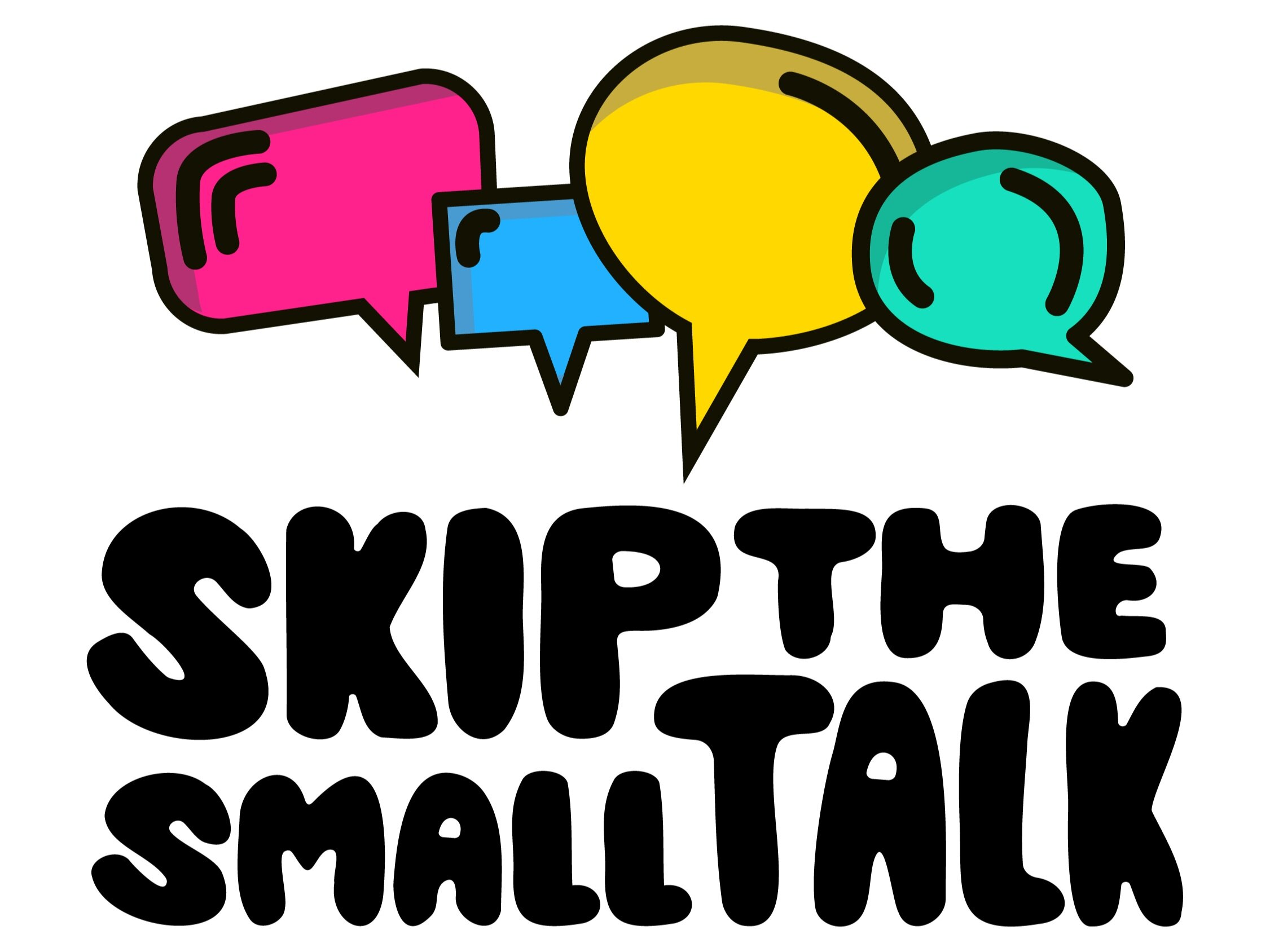While the therapeutic techniques we talk about in our other blogpost about how to support a friend are phenomenally helpful for anyone going through a rough time, we want to give you some more casual but equally powerful ways to help out your friends and loved ones. So, here are two simple but important things that might be helpful to hear for pretty much anyone going through a tough time.
Read MoreI’ve seen a lot of articles about good allyship that all mention roughly the same things: following the leadership of marginalized folks, listening to marginalized folks, doing your own research, and calling out injustice when you see it. (If you do want a refresher in some allyship basics, you can check out this short but great article on how to be a good ally.) Those are all absolutely integral parts of being a good ally, but I’ve noticed that there are crucial allyship skills that pretty much all good allies do, but nobody ever talks about. So I’m going to talk about those here.
Read MoreModern mindfulness meditation practices often aren’t trauma-informed. So, it’s no wonder that a lot of people have trouble finding a practice that works for them.
And that’s unfortunate because when done well, mindfulness can offer so many benefits to your everyday experience of the world that research often has a tough time keeping up with all the wonderful things that mindfulness can do: it’s been shown to help smokers quit, reduce social anxiety, decrease chronic pain, improve memory, and so much more.
So here are some tips, from one person who used to absolutely hate meditation and all things mindfulness-related (and who now actually enjoys them), about how to make meditation and mindfulness work for you.
Read MoreThe tool I want to mainly discuss here is something I call: The “We’re On The Same Team” sandwich (AKA the WOST Sandwich). It’s a technique designed to help both parties think in a more collaborative mindset instead of a competitive mindset, which is much likelier to yield higher quality solutions as well as just being more pleasant and connecting overall. The other thing I like about it is that it helps you still get your point across while giving you as good a chance as possible of feeling heard by the other person.
Read MoreLife can feel so much safer and more comfortable when we’re living in black and white, so our brains tend to cope with uncertain situations by thinking in more black and white terms.
But unfortunately, living in black and white often robs us of the ability to see our reality accurately. And seeing our reality as we wish it were as opposed to how it actually is often leads us to behave in ways that aren’t likely to get us the things we really want, like safety, security, and connection.
So how can we shift our thinking to become more comfortable living in the gray space? I’ve come up with some specific tips.
Read MoreWith any relationship that engenders enough vulnerability and closeness, conflict is usually bound to come up. So one of the best approaches, I’ve found, is to be prepared for it and have a plan for how to handle it when conflict arises.
There’s already tons of literature about how to fight well, but I’ve found one trick that you might not be familiar with.
I call it the “emotional right-of-way.”
Read MoreI used to think my events were inclusive.
Whenever more than one person had an item of critical feedback for the event, I would do something to change it. I thought that was enough.
It took a long time for me to realize, but I was leaving a LOT of people in the lurch.
Because here’s the problem: the people who are the most systematically oppressed and who are therefore least likely to get their needs met, are often also the least vocal about their concerns.
Read MoreIt’s hard for anyone to be vulnerable, but since I’m someone with a relatively large amount of privilege (for example, if I’m vulnerable and everybody ends up hating me for it, I’ll still be able to pay rent), I find it meaningful to normalize doing things imperfectly, and doing those things publicly and proudly.
So, here I am being totally silly and having the time of my life playing this ridiculous game called SideHustle with its creators. It was silly, it was “messy,” and it was absolutely hilarious.
Read MoreIn light of my last blog post about how to support others, I wanted to also share one of the most common pitfalls that I often notice when people try to offer support to others. It’s a mistake that’s usually well-meaning, but its impact can add to the burden of the people you’re trying to support: taking the side of someone who’s not there.
Read MoreEvery so often, I’ll see some content floating around the internet encouraging people to ask their friends and loved ones how they’d like to be supported.
I think that’s a great conversation to have, but in practice, it’s often best to have that conversation **before** anybody actually needs support. If your friend is crying on your couch, that’s often NOT the time to ask them how they prefer to be supported; people who are actively in pain often are not in a state to do the mental work required to educate others on how to best support them.
So, how are you supposed to know what to do when your friend IS crying on your couch? I’ve gathered some tips here based primarily on my suicide hotline training.
Read MoreLoneliness in general is rampant; studies conducted before the pandemic suggest that three out of five Americans are lonely, and a dearth of meaningful workplace relationships are a huge contributor to that. I’d imagine that given the spike of social isolation during the pandemic, those numbers are even worse now.
And in terms of the impact of loneliness on the workplace specifically, according to recent research, only 20% of employees “strongly agree” that they have a best friend at work. But if that percentage could budge to just 60%, companies would yield 12% higher profit, end up with 36% fewer safety incidents, and gain 7% more engaged customers.
So, if you’re in a position to influence the culture of your workplace, what can you do to create a culture of social connection at work?
It may feel clumsy to set your first bunch of boundaries if you’re not used to it, but practice absolutely makes… well, not perfect, but definitely a lot easier and a lot less stressful! So if your first few (or fifty) boundaries feel difficult to deliver, don’t worry-- you’re in good company, and it gets a lot better the more you do it.
Below is a template you can use to set any boundary with anyone. This isn’t the only way to set a boundary, of course, but it can be a helpful place to start.
Read MoreAfter national tragedies, we often see an outpouring of support in the forms of donations and volunteer efforts.
And that’s a beautiful thing; humans empathize, feel the pain of others, and want to do whatever they can to alleviate that pain.
The potential problem with that is that often, while the underlying problems that cause these national tragedies are ongoing, the efforts to address them end up being short-lasting.
So how can we use the momentum we feel today to create long-lasting action that doesn’t burn us out? Here are some tips
If you’re American, chances are that you’re bad at resting.
It’s not your fault; it’s deeply engrained in American culture that we need to “earn” our rests.
But we have it backwards.
We can’t expect to be productive in order to earn our rests; we actually NEED rest FIRST in order to be productive.
If you’ve started feeling odd as we come up upon the one-year-anniversary since a lot of us started quarantining, it’s not just you. You might just be experiencing just one or a few of these things, but some things you may notice are:
Sleep problems
Strange or unpleasant dreams
Irritability
A feeling of restlessness
Feelings of sadness, anger, guilt, and/or anxiety without a clear cause
Flare ups of chronic health issues
Does any of that sound like what your last few days or weeks have been like? If so, then you might be having a trauma anniversary.
If you’re feeling like you’re struggling a little more than usual right now, you’re not alone.
As of writing this article, a lot of us are feeling burnt out from about a year of masking up, social distancing, and avoiding social gatherings.
Fortunately, there’s actually a physiological shortcut to calming down when you’re feeling anxious or angry.
It’s called the vagus nerve.
The vagus nerve helps bring your body back to homeostasis after it’s freaked out.
The nerve runs throughout your body and controls a ton of body functions, like digestion, blood vessel dilation/contraction, heart rate, breathing, and more.
So, when you activate your vagus nerve, you get your digestion to speed up and your heart rate to slow down.
The good news is that there are some neat (and possibly surprising) shortcuts to stimulating your vagus nerve!
I love the above quote from Dr. Lauren Appio. I think it’s important for all of us to accept that for as long as we are alive, even when we don’t mean to, we are going to say things that hurt people. It’s not a matter of “if,” but “when.”
So, whether you’ve said something less-than-kind to a loved one or you’ve used the wrong pronoun for an acquaintance, here are some guidelines for how to respond.
Read MoreAs if figuring out what to do on Valentine’s Day isn’t hard enough, a lot of us have some additional pandemic-related parameters this year. So, we’ve come up with ideas for how to have a low-key but meaningful Valentine’s Day at home with your partner. (BONUS: If you’re not with a partner, you can absolutely pick and choose whatever pieces of this feel right to do with a friend or other loved one— we’ve even put together some adapted question prompts at the end of this to ask your friends, family, and other close people).
Read More

















